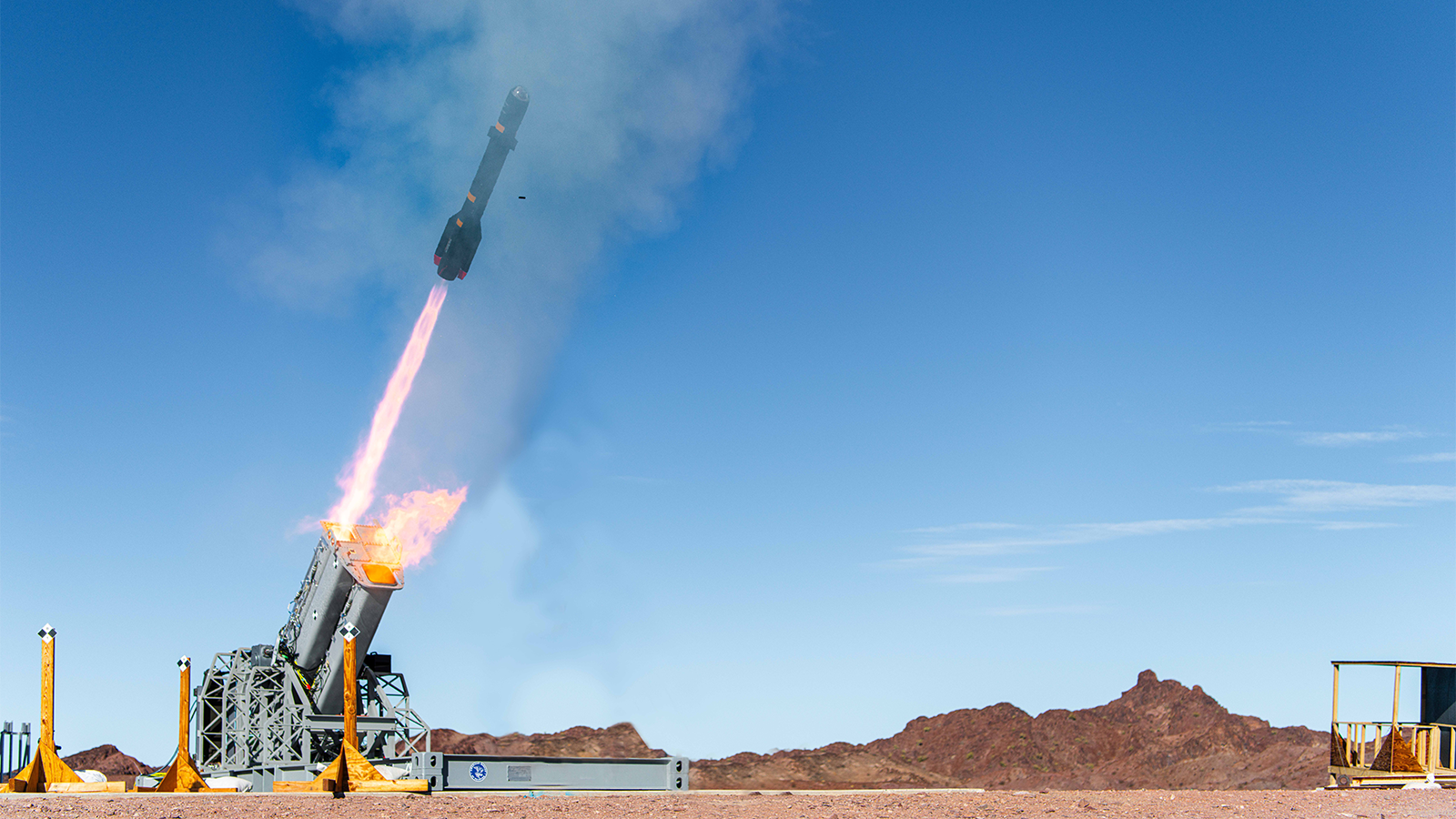Lockheed Martin has successfully test-fired its new Joint Air-to-Ground Missile (JAGM) from an innovative quad-pack launcher designed for vertical launch, aimed at enhancing naval counter-drone capabilities. The announcement, made during the AUSA 2025 conference, highlights the company’s focus on tapping into the rapidly expanding counter-drone market, particularly among naval forces.
The new JAGM Quad Launcher (JQL)—pronounced “jackal”—is expected to provide a cost-effective solution for naval defense. At an average price of $212,000 per missile, the JAGM is seen as more economically viable than high-end interceptors such as the Patriot or SM-6 systems. Lockheed executives acknowledged the limitations of the JAGM’s cost when countering large swarms of small drones but believe it will excel against mid-sized drone threats.
“JAGM [is] another arrow in the quiver for our customers,” said Casey Walsh, Lockheed Martin’s director of multi-domain missile systems. He emphasized that the JQL is specifically targeting naval defense and counter-unmanned aerial systems (UAS) as a primary market. According to Edward Dobeck, Lockheed’s launch systems director, there is a growing demand for counter-UAS solutions, particularly from international markets with smaller naval vessels that cannot accommodate traditional anti-missile systems.
Successful Test and Future Plans
The JQL’s first live-fire test occurred on August 28, 2023, at the Yuma Proving Ground in Arizona, where it successfully hit a stationary, decommissioned tank at a 45-degree angle. Another live-fire event is scheduled for November at China Lake, where the JQL will target a flying drone. This will demonstrate the launcher’s capability to fire straight up, a feature that enhances flexibility in naval combat scenarios.
The Army has previously demonstrated JAGM’s effectiveness against drones, alongside other missile types, using AH-64 Apache helicopters. This achievement is notable for a missile that was originally intended for ground vehicle engagements. Traditional horizontal launch rails used by helicopters and ground-attack aircraft are not ideal for naval applications, as they limit firing angles unless mounted on rotating turrets.
Naval architects prefer vertical launch systems (VLS) due to their compact design, which allows missiles to launch straight up and then maneuver in any direction. Lockheed Martin has leveraged its extensive experience with VLS technology, including systems like the Navy’s Mk 41 VLS and the Army’s Typhon MRC, both manufactured in Moorestown, New Jersey.
To address the challenges of vertical launch, Lockheed employs advanced technologies such as ablative shielding and heat-resistant composites. A sophisticated gas management system redirects the exhaust away from the deck, preventing potential damage during launch.
Enhanced Capabilities and Market Potential
Lockheed anticipates making software updates to improve JAGM’s counter-drone performance based on the results from the initial test shots. Importantly, the missile will maintain its full range of capabilities, including targeting moving ground vehicles and naval vessels, thanks to its dual seekers—one radar and one laser. Lockheed has also tested a third infrared seeker, broadening the missile’s operational versatility.
The quad-pack JAGM is poised to fill a critical niche in modern naval warfare, as long as the firing platform is equipped with an adequate targeting system. This innovative solution not only presents a strategic advantage for naval forces but also highlights Lockheed Martin’s commitment to advancing defense technologies in response to evolving threats in the maritime domain.
